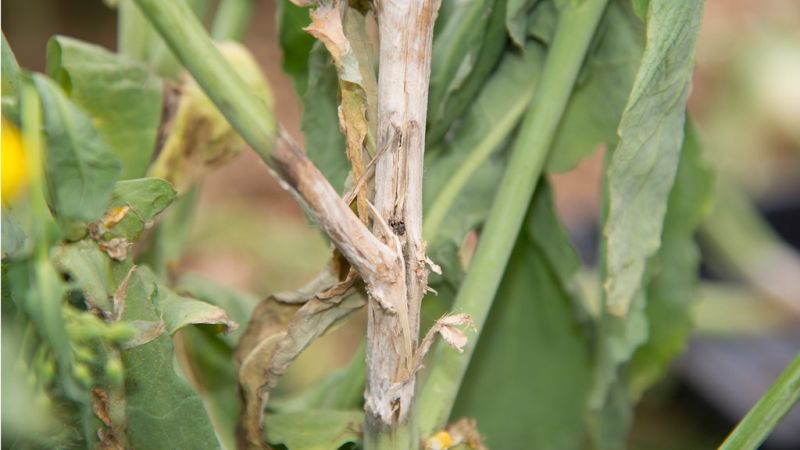
With oilseed rape about to enter the critical flowering period, a sclerotinia infection risk alerts service has been reinstated for 2019.
The web-based service, created by AHDB, uses a traffic-light system to highlight the UK areas where weather conditions are currently, or are forecast to be, suitable for the sclerotinia pathogen to infect crops.
Covering other key infection information, such as spore pressure data, the service can help focus monitoring efforts and guide the application of protectant fungicides.
The disease affects many plant species. Important crops such as oilseed rape (OSR), lettuce, carrot, vegetable brassicas, peas, beans and potatoes are all affected. In OSR, it can cause yield losses of up to 50 percent.
Each spring, warm (>10°C), moist soils bring an end to Sclerotinia sclerotiorum’s overwintering stage in the soil, with the development of brown spore-releasing structures. Carried in the wind, the spores can land on OSR, feed on petals and germinate.
Even where spores are present and food is sufficient, conducive weather is still required for infection to occur.
OSR is at the greatest risk of infection when relative humidity is greater than 80% and air temperatures are at, or above, 7°C for more than 23 hours.
Traffic light system
The infection risk alert service uses observed daily weather data, from the Met Office and Agrii, and forecast data, from Iteris ClearAg, to highlight infection risk for the last 24 (observed) and next (forecast) 72 hours.
A traffic-light system is used to mark each UK site as either: Green = no infection risk alerts forecast; Amber = conditions forecast to come close to triggering infection risk alerts; Red = infection risk alerts forecast.
Catherine Garman, who manages disease research at AHDB, said: “Fungicides have little or no activity against sclerotinia in a curative situation. This is why they must be applied as a protectant, before infection occurs.
“Ideally, where disease pressure merits it, any spray should go on just before an infection risk alert. Going on earlier than this may increase the need for a follow-up treatment.”
The optimum timing for a single spray is, usually, just before mid-flowering on the main raceme and prior to significant petal fall. Persistence of full dose fungicides is approximately three weeks.
If a spray is made earlier or if the flowering period is extended, a second spray may be required to protect the crop, if the weather conditions are conducive for infection.
No resistance to fungicides has been reported in the UK for sclerotinia. However, strains with decreased sensitivity to SDHIs and MBCs have been reported in France.
Mixtures, co-formulated products, and products with a different mode of action should be used across the whole fungicide programme to manage resistance risks.
